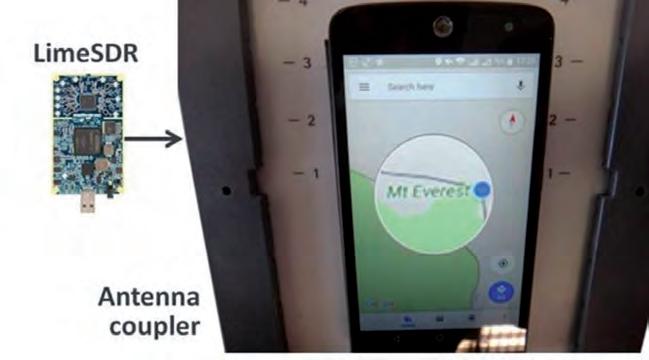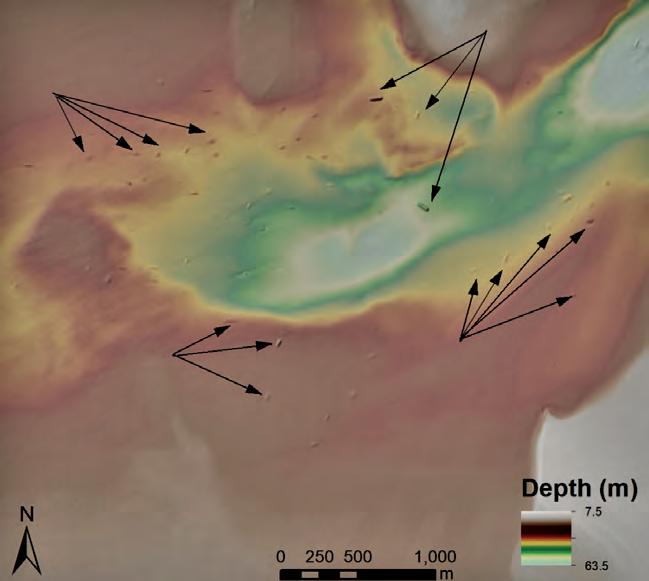Feature |
By Gustavo Lopez and Maria Simsky, Septentrio
How Spoofing Affects Survey and Mapping
What is GNSS Spoofing? With spoofing attacks on the rise, survey-grade GNSS receivers need to be protected by interference mitigation technology utilizing the latest security techniques to ensure reliable positioning. The survey and mapping industry has been benefiting for years from GPS/GNSS precise positioning technology. While GNSS spoofing is recognized as a real threat for unmanned aerial vehicles (UAVs or ‘drones’), its influence on survey and mapping equipment is still underestimated. Reliable data capture is important across various mapping use cases, from man-based surveying and mobile mapping all the way to UAV photogrammetry. Ensuring dependable positioning requires the use of robust equipment, designed in such a way that alleviates all possible vulnerabilities. The use of GNSS receivers which are robust against jamming and spoofing is key to trustworthy data capture anytime, anywhere.
GPS/GNSS spoofing vs jamming Both jamming and spoofing are a type of GNSS radio interference that happens when weak GNSS signals are overpowered by stronger radio signals on the same frequency. Jamming is a kind of ‘white noise’ interference, causing loss of accuracy and potentially loss of positioning. This type of interference can come from adjacent electronic devices or external sources such as radio amateurs in the area. Spoofing is an
intelligent form of interference which fools the user into thinking that he/she is in a false location. During a spoofing attack, a radio transmitter located nearby sends fake GPS signals into the target receiver. For example, even a cheap software-defined radio (SDR) can make a smartphone believe it’s on Mount Everest (see Figure 1)! GNSS users are experiencing ever-more cases of jamming, and spoofing events are on the rise too – especially in recent years since it has become easier and more affordable to create malicious spoofing systems. There are plenty of examples, from Finland – which experienced a week-long spoofing attack in 2019 – to China where multiple vessels have been the target of a spoofing attack. Hence, jamming and spoofing protection is no longer a ‘nice to have’ feature but a critical component of a GNSS receiver.
Spoofing incidents are on the rise C4ADS, an NGO conducting data-driven analysis of conflict and security matters, concluded that Russia has been extensively using spoofing to divert aerial drones from entering airspace in the
vicinity of governmental figures, airports and ports. And some of the most enthusiastic spoofers are fans of the augmented reality mobile game ‘Pokémon Go’, who use SDRs to spoof their GPS position and catch elusive Pokémon without having to leave their rooms. Such attacks usually target a specific receiver. However, the spoofing transmission will actually affect all GPS receivers in the vicinity. For example, an SDR can affect all GPS receivers within a 1km radius of the spoofing source, and the signal can be amplified for further propagation. This means that survey or mapping jobs in densely populated areas are at a higher risk of such ‘indirect’ spoofing attacks.
How to spoof-proof a receiver A spoofer can either rebroadcast GNSS signals recorded at another place and time, or generate and transmit modified satellite signals. Therefore, to combat spoofing, GNSS receivers need to be able to distinguish spoofed signals from authentic signals. Once a satellite signal is flagged as spoofed, it can be excluded from positioning calculations. There are various levels of spoofing protection that a receiver can offer. Using the analogy of a home intrusion detection system, it can be based on a simple entry alarm system or a more complex movement detection system. For added security, the home owner could decide to install video image recognition, breaking-glass sound detection or a combination of the above. An unprotected GNSS receiver is like a house with an unlocked door; it is vulnerable to even the simplest forms of spoofing. Secured receivers, on the other hand, can detect spoofing by looking for signal anomalies or by using signals designed to prevent spoofing, such as Galileo OSNMA and E6 or the GPS military code.
Figure 1: Even a cheap SDR can overpower GNSS signals and spoof a single-frequency smartphone GPS into believing it is on Mount Everest.
Advanced interference mitigation technologies, such as the Septentrio AIM+, use sophisticated
18 | Is s u e 1 2021 | Hydro i nt e r nat i o na l
18-19_featuresimsky.indd 18
18-03-21 14:06





